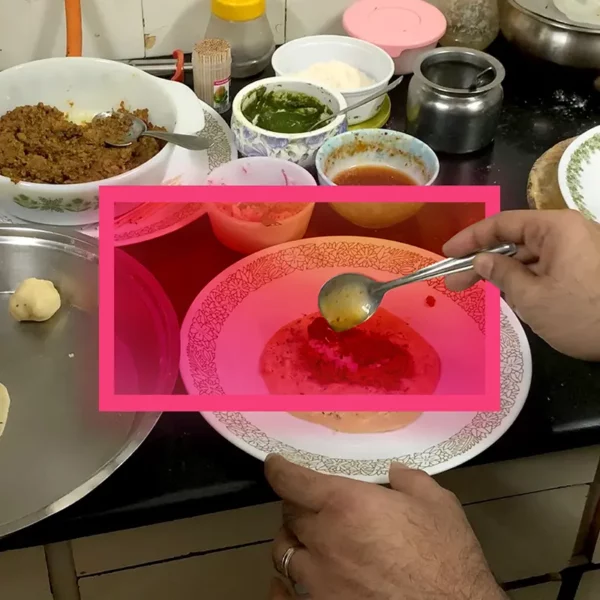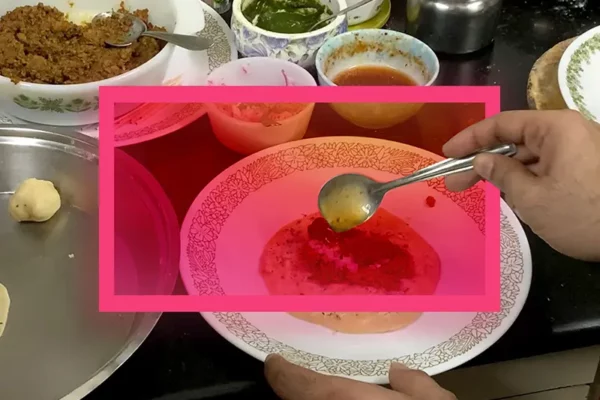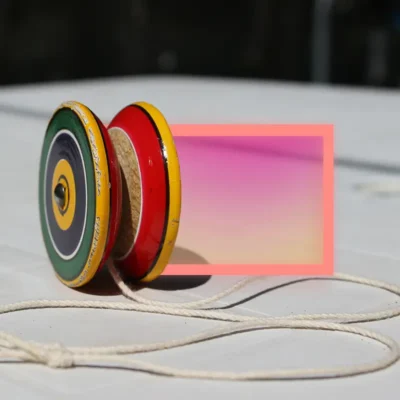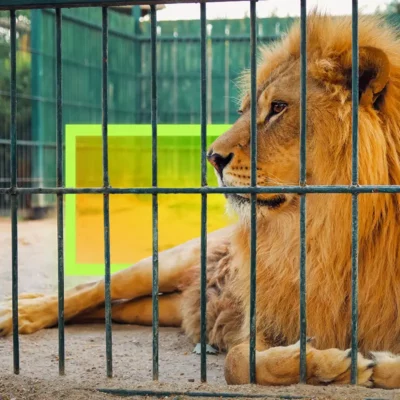Twenty-one meals with my family, in seven days
For filmmaker Jai Punjabi, the most powerful connection to home is through food – specifically the wonderful Indian cuisine he was raised on. Hoping to preserve the recipes of his beloved family dishes, Jai returns to his parents’ home in Bombay, only to discover that the secret lay not in the ingredients, but in a way of being.


Table of Contents:
Transcript:
Twenty-one meals with my family, in seven days
JAI PUNJABI: I’d look at mom and Ramlaal as they cook this dish, and they keep going back and forth. They have this chemistry between them. She says, “It needs more ginger.” He’ll say, “No, I already put enough ginger,” and then take a taste and nod. He adds more ginger. “Maybe a little bit more salt,” Ramlaal offers. Mom drops a little of the curry in the center of her palm, licks it for taste, pauses, and then agrees. They keep going back and forth, back and forth. They’ve cooked the dish for 20 years. You’d think they just have it down. But since they’re not following a recipe, they have this way of being.
ROHAN GUNATILLAKE: Jai Punjabi created the award-winning independent film Patang, or in English, The Kite. He’s also been the supervising producer of Meditative Story since its very beginnings. Born in Bombay, raised in Hong Kong, and now living in Brooklyn, Jai has an uncanny knack for designing experiences that make visits with his family unforgettable. His most powerful connection to home is through food – specifically the wonderful Indian cuisine he was raised on. Hoping to preserve the recipes of his beloved family dishes, Jai returns to his parents’ home in Bombay to write down the recipes, only to discover that the secret to these recipes lay not in the ingredients, but in a way of being.
In this series, we combine immersive first-person stories and breathtaking music with the science-backed benefits of mindfulness practice. From WaitWhat and Thrive Global, this is Meditative Story. I’m Rohan, and I’ll be your guide.
The body relaxed. The body breathing. Your senses open. Your mind open. Meeting the world.
PUNJABI: I Facetime with my mom and dad from my kitchen. The connection over the phone is clear, but that doesn’t prevent us from raising our voices in the hope of being heard. Over the past few weeks we’ve been trying to nail down a list of 21 meals that sum up the best home cooking from our family. Next weekend, I leave Brooklyn and head to Bombay, where my parents live. Over the course of a seven-day trip, we’re going to cook the 21 meals that make the list.
My wife, Monica, can’t help but giggle as she overhears the Facetime call. She thinks it’s absurd how much my family obsesses over food. Everyone has an opinion about everything. My brother and sister-in-law join the call to lobby for their favorite dishes. Five faces now fill the phone’s display, all of us laughing and talking over one another, trying to make a case for a dish we cherish, to get a prized spot on the list.
For example: deep-fried potato cutlets with onion and cilantro, aloo tikki, are in, but deep-fried chickpea fritters soaked in yogurt with salt and red pepper, dahi vada, are out. Now sliced fried okra with dried mango powder is in, but much to the chagrin of everyone on the call, lamb koftas in an onion and tomato broth are out. My dad mutters about me under his breath: “Jai never liked kofta.”
The meals I want to include are the ones that really mattered to me growing up. Not the dishes that friends and family enjoyed when they came to eat at our house; I want to focus on the dishes that I relish.
After all the back and forth, we settle on our 21 meals. I Whatsapp my parents the final list, and then begin my 20-hour journey to India. After a layover in Dubai, I finally arrive. It’s 4 a.m., and despite the early morning hours, Mom’s there to greet me. She’s beaming. Her son is finally home.
We have one week together. Seven days. Twenty-one meals. And we’re going to cook and eat every single dish on the list. What motivates this family stunt? Well, my father’s turning 80, he kicked cancer three times in 20 years, but now faces a new challenge. His kidneys are failing, and he has to undergo dialysis three times a week for, well, the rest of his life. He and my mom used to visit me every year in New York, but because of the dialysis, now he can’t. And the two weeks a year that my life allows me to visit India just isn’t enough anymore. With each year passing, the stakes get higher, and I feel an urgent need to make each trip count.
Here in Bombay, in my parents’ house, I’m no longer an adult. All my “accomplishments” dissolve. I feel like a kid. We fall into these mindless, boring conversations with one another. The television is like a tractor beam, broadcasting reruns of ’80s test cricket matches, ’90s Bollywood films, and daily livestreams of devotional concerts from the holiest corners of the country.
I arrive with cameras, audio gear, and an empty recipe book that I plan to fill by the time I return. I also come with an aggressive cooking agenda. The rule is: everyone participates in preparing every meal. This is partially so that everyone is forced to tear themselves away from their routines and rituals. And it’s partially out of our love for the food. But most importantly, I’m trying to answer a question I’ve been asking myself: How do I create moments that count? I never know which trip back to India might be the last time I see Mom or Dad. By framing the experience, planning it, naming it, I’m trying to actively create memories that will last the rest of my life.
GUNATILLAKE: Creating containers for our memories helps us not forget moments that have changed our lives in some way. Take a moment and bring back food-related memories that move you. What feelings arise? That’s your container, and you can go back to it later today, tomorrow … anytime.
PUNJABI: Twenty-one dishes in seven days, it’s easy to do the math. We cook morning, noon, and night. The kitchen in my home in India is modest. It’s fifteen feet by five feet if that. We cook with just two simple burners lit by a gas cylinder. Feels like we’re camping.
The king of the kitchen is our family cook, Ramlaal. He’s cooked with us for over 40 years. He speaks to me in Hindi. And the first words out of his mouth are, “Baba, I don’t measure as I cook. I just use my instincts.” He sees me hesitate. “Don’t worry, the first few times you cook, the dish may not come out right. Keep cooking through your doubts and mistakes. You’ll be fine.” Good life advice. His smile is infectious. And with that, we dive in.
Dish #1 is yellow moong daal, a lentil broth with a trinity of Indian spices: cumin, turmeric, and coriander. The lentils have been soaking overnight. The water they are boiled in blends the spices, garlic, ginger, onions, and tomato. The third whistle from the pressure cooker signals we’re done.
The final step is the tadka, it’s an essential process in Indian cooking where you cook whole spices in boiling ghee. The mustard seeds sizzle and pop, turn reddish brown and release their fragrance as I dunk them into the daal. That’s where the magic happens. Ramlaal, he nudges me to sip and salt before the dish is served. The flavors from the broth hit my tongue and transport me. You know how listening to a song can take you back to a time and place? Home cooking does that for me. Standing in the kitchen, sipping the daal, I feel seven years old.
Mom, she loves to tell this story where, until the age of seven, the only thing I ate was daal. I’d eat it with steaming hot basmati rice and smashed deep-fried potatoes sprinkled with salt and paprika. Mom got curious: “Why is this the only thing that my son’s eating?” So at a family get-together, she finds an opportune time to grab the seven-year-old me by the hand and corner her second cousin, a therapist. She promptly asks him, “Why won’t my son eat anything else? Is there something wrong with him?” The therapist takes one look at me and, with little to no examination, says, “Well, he has plenty of options. Nothing’s really wrong, and he’s just going to have to find his way.”
Every therapist that I’ve visited since then has given me some variation of the same advice: “You have lots of options, nothing’s really wrong, you have to stop listening to what others expect from you, and just find your way.”
I did find my way … to New York City, at 18, for college. And after living there for two decades, I started looking for ways to bridge the distance with my family. Food is the obvious place to start.
Now, daal is a simple dish. Over the course of the week we cook more complex meals, like dish number seven, deep-fried eggplant in a coconut curry. This is one of those dishes that works in layers. First, the eggplant lands on your tongue, and it melts in your mouth. Second, there’s a wave of coconut that comes over that’s cooling. But then third, there’s the spice, the chili just whips the tongue and it feels like an explosion in your mouth. The first time we ate this dish was at my aunt’s house. It was so spicy. With every bite, it felt like I was going to die, but it was so good, it just didn’t matter. No one at that dinner could stop eating that night.
I look at Mom and Ramlaal as they cook this dish, and they keep going back and forth. They have this chemistry between them. She says, “It needs more ginger.” He’ll say, “No, I already put enough ginger,” and then take a taste and nod. He adds more ginger. “Maybe a little bit more salt,” Ramlaal offers. Mom drops a little of the curry in the center of her palm, licks it for a taste, pauses, and then agrees. They keep going back and forth, back and forth. They’ve cooked the dish for 20 years. You’d think they just have it down. But since they’re not following a recipe, they have this way of being. They’re present to how the spices and flavors are coming together in that moment, how it’s unfolding in front of them right there and then, and they’re constantly adjusting and course-correcting as they cook. Ramlaal jokes that this eggplant dish is at risk of turning into a complete disaster half a dozen times while being cooked. He laughs and says, “It always comes out great, if you pay attention.” It’s Mom and Ramlaal’s ability to taste what’s in front of them and adjust that steers the dish to perfection.
I watch them do this, and it makes me think about my own life back in New York. I create podcasts and films. And all I try to do all day with my colleagues is create an environment where they can be vulnerable, take risks, develop their own lingua franca, and operate with a true spirit of collaboration. I try to encourage them to see what’s in front of them in order to build on one another’s ideas. Like Ramlaal and Mom, we’re constantly adjusting and course-correcting. Always course-correcting.
Standing here in the tiny kitchen – with paint peeling off the walls and fluorescent tube lights buzzing overhead – I realize for the first time that it isn’t the recipes I need to learn. It’s the process. Recipes are just a list of ingredients and steps. But what Ramlaal and Mom show me is how to create these dishes. They’re constantly tasting, savoring, adjusting. It’s a way to cook and a way to live. It acknowledges that constant adaptation is part of creating something beautiful.
GUNATILLAKE: However your body is positioned right now, can you sense how it too is constantly making little corrections? Adjustments and movements and relaxations. Rest with the sense of your body just for a tiny moment, and take that connection into what comes next.
PUNJABI: The dish that leaves the greatest impact on me is dish number seventeen, sai-bhaji. It’s a spinach and lentil dish at its core, with a purée of seven other vegetables that are combined to give it a complex flavor. It’s not a fancy dish. You won’t find it at a hipster Indian restaurant in Brooklyn. It’s a dish that originates from North India in a region called Sindh, the region where my family is from, on the border between India and Pakistan.
My father was forced out of Sindh in 1947 during the partition between the two countries, and he’s only 5 years old when he comes to live in a refugee camp in Bombay – the city that we’re now cooking in more than 70 years later. He explains that the hardship of being away from home created a sense of community where everyone looked out for one another. He tells me about a phase he went through as a kid in the refugee camp, when he would go out every single day and seek out sai bhaji – the same dish I’m now here cooking. I can just picture Dad, with his effusive smile, zipping in and out of the different side streets in search of the dish, for days on end.
I think the reason he went looking for sai bhaji was that he just missed home. A home that he couldn’t go back to. A home that now only exists for him in his imagination, through the stories that he tells and the food that he eats.
I think about my own journey coming to India to gather these recipes. And how home for me also lives through the stories I tell and the foods that I eat.
Well, the time flies, and the next thing I know, all 21 meals are complete. I head back to the airport and begin my return journey. I’ve spent so much of my life at airports, coming and going, you’d think it would get easier. But these days it keeps getting harder to say good-bye.
Back home in Brooklyn with my wife, I play back the videos from my trip. I thumb through the recipes which are documented for the first time. And I invite friends over to make one of my 21 meals: Dish number twenty, minced chicken cooked in onion, tomato, and Indian spices stuffed into a wheat wrap. The wrap is lined with a cilantro and egg wash. The meat is laced with a fresh mint and tamarind chutney. I stand in my modern kitchen, on a high floor of an apartment building with views of the city. Large windows let in the magic-hour light, and Miles Davis plays on a speaker in the corner of the room. As I sample the dish to see if it needs an adjustment, I’m instantly transported back to my kitchen in Bombay. I can feel Ramlaal and Mom with me. Course-correcting, course-correcting. More salt. More ginger. I can hear a Bollywood film playing on the television in the living room where my father sits telling me some story of how he earned his Boy Scout cooking badge. I realize I’m part of a continuum that began on the border between India and Pakistan 80 years ago. And I realize how standing behind this stove that my story is ongoing.
I thought that cooking 21 meals over seven days would create memories, and it did. But what I realize, cooking in my kitchen now, is that no matter how far away my family is, they’ve taught me how to adapt, how to create something beautiful. And they stand here, guiding me over my shoulder, no matter where I go.
Rohan’s closing meditation
GUNATILLAKE: Thank you, Jai. In just a moment, I’ll guide you through a closing meditation.
Where to start? There is so much to love about Jai’s story. So many ingredients. Inspired by his adventure to Bombay and back, I thought for our short practice together we’d do a masala meditation. A masala is a spice mix, and each of the 21 dishes that Jai and his family created will have had their own as their foundation. No need to measure anything out, though, we’ll find our own way. A pinch of this, a shake of that, and just see how they come together in the cooking. And like Jai says that turmeric, cumin, and coriander is the holy trinity of Indian spices, we’ll use three base meditation ingredients for our masala. And the ones we’ll use are breath, body, and space.
Let’s start with breath. Dropping it in. Dropping into it. Letting the breath be like it is. And letting your attention flow along with it. This most foundational of meditational flavors.
The breath. Sharp or mellow. Don’t worry. Just know it. Ride along with it. The ingredient that is awareness of the breath.
Now the body. The body as a whole. The breath is part of the body, of course, but now with this second ingredient for our masala, open out your awareness to include the whole body. The body as a single universe. Letting your attention, your mind, absorb into this now. And when you notice your awareness contract down into only knowing a part of the body, nudging it back out into the sense of the whole. Knowing the whole.
The second ingredient for our masala: awareness of body.
Okay. Now open to space. Sense the space around you. In all directions. However your body is, you exist right now as a body in space. Take my invitation to sense into that. And if you can get a feel for that, even just a tiny taste, enjoy it.
Our third core ingredient: awareness of space.
Now like every great masala, let’s mix it all together. Just as turmeric, coriander, and cumin influence all of Jai’s dishes but aren’t tasted alone, let’s experience breath, body, and space in combination. Aware of our physical experience where we are. And noticing when awareness of breath, awareness of body, and awareness of space when they arise. And tasting how they are all mixed up. And in that mixture together, helping ground and connect you.
I realize for the first time that it isn’t the recipes I need to learn. It’s the process.
That was my favorite line in Jai’s story, and it sums up my approach to how I share meditation.
Not just instructions to follow blindly, but principles to learn so you can interpret the practices in your own way. Throughout Meditative Story, as we explore each different meditation technique and idea, do please consider them an ingredient to try and taste and most importantly for you to mix and create your own dishes, your own nourishment.
Thank you Jai, and thank you.





